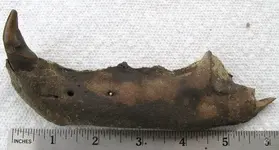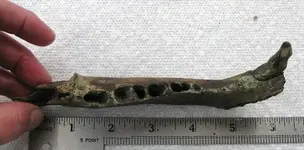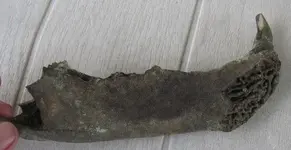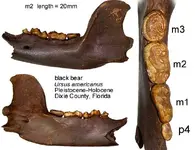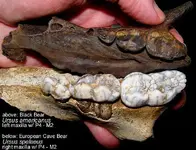naturegirl
Bronze Member
- #1
Thread Owner
Hi fossil people. I was wondering how long it takes bones to fossilize? I'm asking because I've found some bones, they aren't fossils, I don't think. But they are hard as stone, and really heavy. Old bones should be lighter the longer they decay, right? These were found in a creek, moss very thick on them, and if the jawbone is a black bear, they haven't been around here for 100 years. I know that isn't long enough to become a fossil, but wouldn't a bone just decay in the water also? There isn't a bone section in the forum, so I thought you guys might could help me on the "ways of a bone" on it's way to becoming stone. My husband said whack it with a hammer, but I don't think I want to do that. Here's some pics of the jawbone. I squeezed the empty teeth sockets really hard, and they don't break. Thanks.
naturegirl
naturegirl



